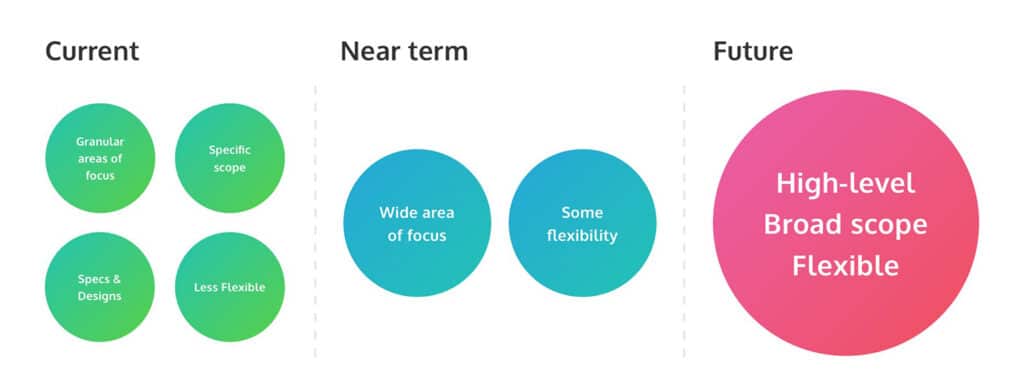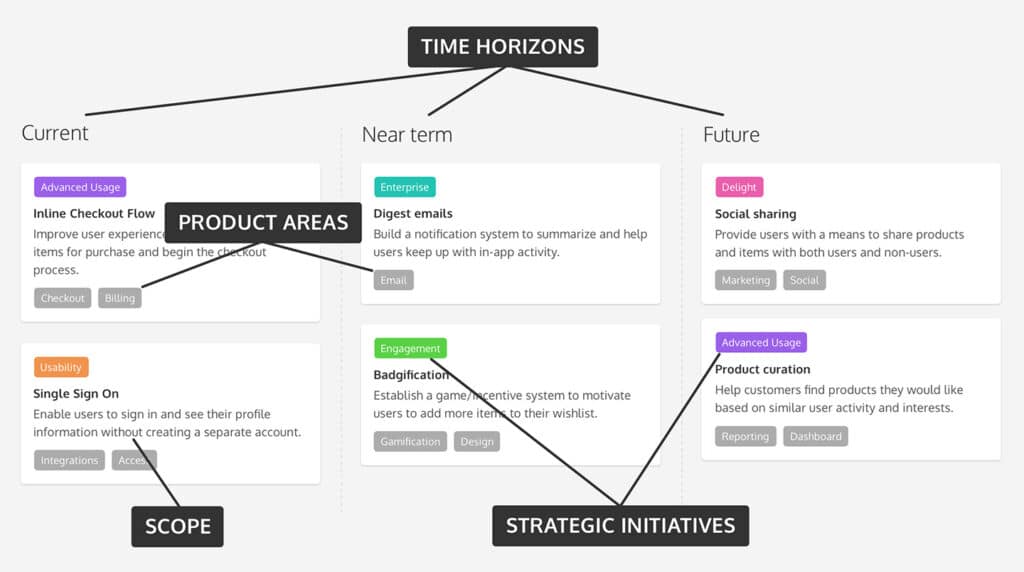Lesson 1: Replace your Gantt chart with a real product roadmap
From the e-course “How to build a roadmap everyone understands”
Today, you’re going to start learning how to build a product roadmap that everyone understands. If you’ve been using a Gantt chart and suffering for it, this is going to change everything for you.
If you’re anything like us, you think Gantt charts, spreadsheets and timelines are lousy tools for communicating your product strategy. You are correct.
They’re myopic. They force you to set scope and features you can’t be sure about ahead of time, and force you to assign dependencies which doesn’t make it easy for you to change plans when you need to. If you’ve been using a Gantt chart to plan your roadmap, chances are that you’ve also been stuck building something you know is no longer right for your product.
Also, who likes reading Gantt charts?
In this series, we’re going to show you how to build a product roadmap that helps you plan your product the way you want to. Along the way, you’ll see the benefits of:
Having way fewer meetings – Your priorities (what and why) will be clearly documented on the roadmap. You won’t have to explain things differently to different people.
Fostering healthy team debates – Your roadmap will be the reference point for team members to challenge themselves and one another to link their deliverables back to roadmap goals and objectives.
Making product decisions everyone understands – You won’t just look like the bad guy batting down ideas. You’ll actually be able to discuss customer feedback and ideas through the lens of your roadmap and priorities everyone can see.
That’s what the theme-based product roadmap does for you. You’ll be able to plan your product strategy and priorities without committing to features and solutions months in advance. You’ll be able to create enough space and flexibility in your plans to be able to respond quickly to change – whether due to sudden shifts in customer expectations, technology, and resource availability.
Best of all, everyone understands it! Let’s dive in.
What is a theme-based product roadmap?
The theme-based roadmap starts from a very different place than a Gantt chart.
It’s a high-level strategy document that communicates in terms of broad problems you plan to solve. It’s designed to help you communicate the big picture around your product in a clear, visual and accessible way.
That is, anyone picking it up should be able to quickly understand:
- What problem are we trying to solve?
- How do we plan to solve it?
- What are our objectives? (OKRs/KPIs/goals)
Your priorities sit on your roadmap in three columns: Current, Near-Term and Future.

In the image above, you can see how priorities get more and more detailed as they move towards the Current column.
That makes perfect sense when you’re a product manager.
You know roughly what you’re working towards and you’re considering a number of ideas to help you get there – but nothing’s a sure thing yet, especially not out in the future.
Your theme-based roadmap comes with another advantage: it’s flexible enough to handle rapid change.
If your priorities suddenly change, you don’t have to panic! You can shift your priorities around without worrying about dependencies. That makes perfect sense when you’re a product manager. You know roughly what you’re working towards and you’re considering a number of ideas to help you get there – but nothing’s a sure thing yet, especially not out in the future.
This product roadmap gives you the opportunity to tell your product story and fill in the details as you go.
Are you looking to be more agile? Then your theme-based roadmap comes with another advantage: it’s flexible enough to handle rapid change. If your priorities suddenly change, you don’t have to panic! You can shift your priorities around without worrying about dependencies.

Yep, this roadmap changes everything.
Course lessons are sent via email, but if you can’t wait, you can continue now: